
Bouteloua, Boutelou: planting, growing, and care
Contents
The Bouteloua in a few words
- Bouteloua is a small, hardy perennial grass that is very easy to grow.
- Its fine grey-green foliage is evergreen to semi-evergreen.
- Its long summer spike is decorative and original.
- The spikes, carried on flexible stems, resemble small translucent brushes.
- Highly drought-resistant, it is also very hardy.
- It thrives in dry, well-drained, sunny, and warm soil, even stony and chalky.
- It requires very little care and maintenance.
The word from our expert
The Bouteloua is not the most well-known of ornamental grasses. Yet, this plant, originally a forage crop, also offers ornamental species. Bouteloua curtipendula and Bouteloua gracilis deserve to be planted more widely, as they are packed with admirable qualities. Highly hardy, extremely drought-resistant, very low-maintenance, and highly adaptable, Bouteloua could well become increasingly popular in gardens facing ever more challenging climatic conditions. Thanks to its compact size (40 to 90 cm maximum), this Poaceae can find a place in gardens of any size. It brings a rustic and relaxed charm, and its graphic appeal complements any garden style. Everyone can take advantage of its fine blue-grey foliage, evergreen to semi-evergreen depending on the region, as well as its original summer flowering. Between June and September, sometimes longer, the clump of foliage is topped with spikes resembling tiny translucent brushes, with a trailing habit that gives them the appearance of little accents swaying above the bed. Both foliage and spikes change colour throughout the season, creating an evolving ornamental effect. Whether you have a small urban garden with a contemporary look, a romantic garden, a scree garden, a rockery, or a simple slope to plant, you should consider Bouteloua as an interesting option.
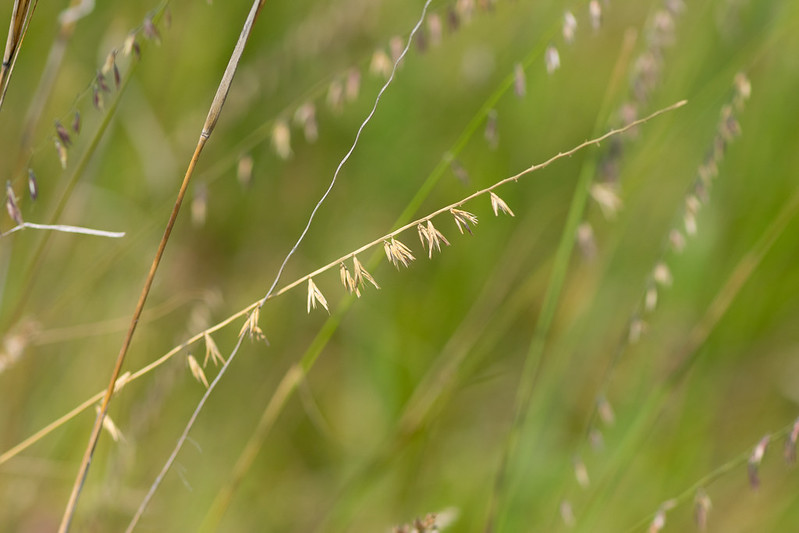
Bouteloua curtipendula (© Joshua Mayer)
Description and Botany
Botanical data
- Latin name Bouteloua curtipendula, Bouteloua gracilis
- Family Poaceae (Grasses)
- Common name Boutelou (graceful)
- Flowering June to September
- Height 40 to 90 cm
- Exposure full sun (partial shade)
- Soil type any well-drained soil, even dry and calcareous
- Hardiness excellent (-25°C to -30°C)
Bouteloua is a botanical genus belonging to the Poaceae family, formerly known as grasses. Native to the American continent, it can be found everywhere except in the extreme northwest and southeast. This botanical genus, which includes around forty annual or perennial varieties, is primarily used in gardens in two forms, Bouteloua curtipendula and Bouteloua gracilis (the graceful Boutelou). An excellent forage plant, found in the arid and dry prairies of the ‘Great Plains’ that shaped the American landscape and remain a symbol today, this grass was named after two Spanish brothers, professional botanists, Claudio and Esteban Boutelou. Capable of growing in harsh conditions, Boutelou thrives spontaneously in well-drained soils, even dry and calcareous ones, and in sunny exposures, possibly in partial shade. It is therefore no surprise to find it abundantly in the wild on rocky slopes, arid plains, and all open spaces from Canada to Argentina. This ability to withstand prolonged drought, combined with excellent hardiness, ranging from -25°C to -30°C, makes it a grass of choice in our gardens, increasingly affected by long and severe summer heatwaves. It will be more discreet in moist soil and partial shade and may even be outcompeted by plants better suited to very wet conditions.
Bouteloua forms a fairly low clump of foliage, rather stiff and narrow, mostly emerging from the base and slightly pubescent. Grey-green, it displays more bluish hues if the soil is well-drained and the exposure sunny. Later in the season, it gradually takes on purplish, bronze-purple, and reddish-orange tones, very decorative, before turning to parchment-like tan. Semi-evergreen in mild climates, it may go dormant and become deciduous in colder climates.

Bouteloua gracilis (left and top zoom on the inflorescence), and bottom right Bouteloua hirsuta
The flowering of Bouteloua is actually a spike; it usually begins around June and can last until September if the plant benefits from some moisture. It develops culms, the height of which varies depending on growing conditions and species: Bouteloua curtipendula can reach nearly 90 cm, while Bouteloua gracilis rarely exceeds 40 cm. The inflorescences are compound. They are unilateral clusters of spikes, each containing numerous spikelets. They are thus borne almost exclusively on one side of the stem, at the top of an aphyllous peduncle, placed in line with the stem. The spikelets arranged in this way resemble small combs or translucent brushes, silvery-pink to purple-violet, turning straw-yellow as they mature. The spike of Bouteloua shares similarities with that of oats, which is likely what earned Bouteloua curtipendula its English name, ‘side-oats grama’. The inflorescences develop vertically and then, gracefully bending, they form a light and airy cloud, like little accents floating magically in the air above the foliage. In Bouteloua gracilis, the spikes curl up characteristically at the end of flowering.
Requiring very little maintenance (a hard prune in early spring is sufficient), easily propagated by division or sowing, undemanding and resilient, this grass fits well in a flower bed or inserted into a dry rockery, a scree garden, or a more contemporary space. Planted en masse, it can also substitute for a lawn, even in poor and very dry soils. Also free from diseases, this grass with many qualities deserves to be discovered or rediscovered by gardeners increasingly facing the vagaries of the climate.
The different species and varieties

Bouteloua gracilis
- Flowering time August to October
- Height at maturity 40 cm
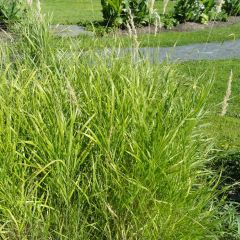
Bouteloua curtipendula
- Flowering time July to October
- Height at maturity 80 cm
Discover other Bouteloua
View all →Available in 1 sizes
Available in 2 sizes
Planting and sowing of Bouteloua
Where to Plant?
Given its American origins, we know that the Bouteloua grows in all types of soil, even poor and calcareous, provided it is sufficiently drained. A poor and stony terrain poses no problem for it, nor does a slope with often parched soil. Winter drainage is an important factor for the plant’s longevity, but a minimum of coolness in summer allows it to extend its flowering period, sometimes until September.
A bright, sunny, or even warm exposure is beneficial for it. Here, it takes on more beautiful colours (its foliage tends towards blue, and autumn hues are more pronounced), and its habit is more regular. It will grow in partial shade and in fresh soil, but it loses some of its appeal and may eventually be outcompeted by other plants better suited to these conditions.
Like many grasses, you can plant it in a flowering border, a naturalistic meadow, a garden with a more contemporary look, on a slope, a scree garden, or a well-exposed rockery. Its grace can only add value to your composition.
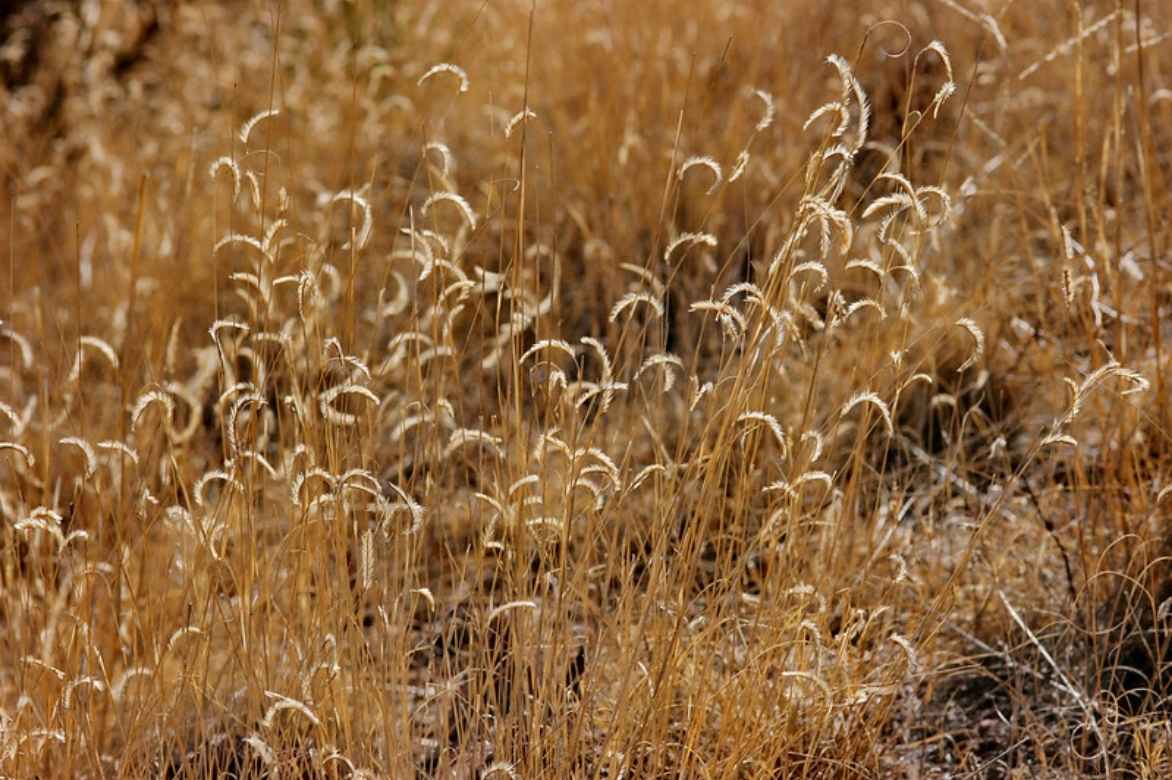
Bouteloua gracilis
When to Plant?
Although hardy down to around -25°C, the Bouteloua is a warm-climate grass. To encourage its establishment, it is advisable to plant in autumn (between September and November) in regions with mild winters, but wait until spring if your winters are harsh and wet.
How to Plant and Sow?
Planting Bouteloua
- Soak the bucket in a volume of water to saturate the root ball.
- Meanwhile, dig a hole equivalent to 2 or 3 times the root ball if possible.
- In heavy, wet, or poorly drained soil, lighten it with a not-too-rich potting mix and a draining material (pumice, gravel, river sand, clay pebbles, etc.) mixed with the excavated soil.
- Remove the root ball from its bucket and place it in the centre of your hole, positioning it so that the top of the root ball is level with the soil once the earth is tamped down.
- Water to thoroughly soak the substrate and bring it into contact with the root ball’s soil.
- Mulch to a depth of 2 or 3 cm, using a material of your choice (opt for mineral or organic mulch depending on your style or constraints).
–> In the weeks and months that follow, ensure you water your young plants if rainfall is insufficient. Once established, your Bouteloua will tolerate drought very well.
Sowing Bouteloua
Sowing is best done in early spring, either in buckets, to transplant in autumn or the following spring depending on your climate, or by direct sowing, broadcast.
In Buckets,
- Sow the seeds spaced out on the surface of the potting mix, then cover with a little sieved potting mix or, better still, with perlite or vermiculite.
- Soak your container filled with water to slowly saturate the entire potting mix by capillary action.
- Place in a warm, airy, and bright spot, keeping it moist but not waterlogged.
- Thin out as needed as the seedlings emerge, and when the plants have developed a few true leaves, transplant them into individual pots filled with standard, well-drained potting mix, then plant them out in autumn or the following spring depending on your region.
Direct Sowing,
- Weed, clean, and rake the area to be sown.
- Sow your seeds evenly and fairly spaced. Cover with a thin layer of potting mix and water with a fine spray.
- Keep moist until germination, then support the growth during the first year.
–> Subsequently, the Bouteloua tolerates drought well.
Maintaining Bouteloua
Maintaining Bouteloua is very easy and not time-consuming.
- Ensure the base of the young plants stays cool after planting, as this promotes good root development, provided you remember that it’s better to water thoroughly once a week than a little every day.
- In early spring, simply cut back all remaining leaves close to the clump.
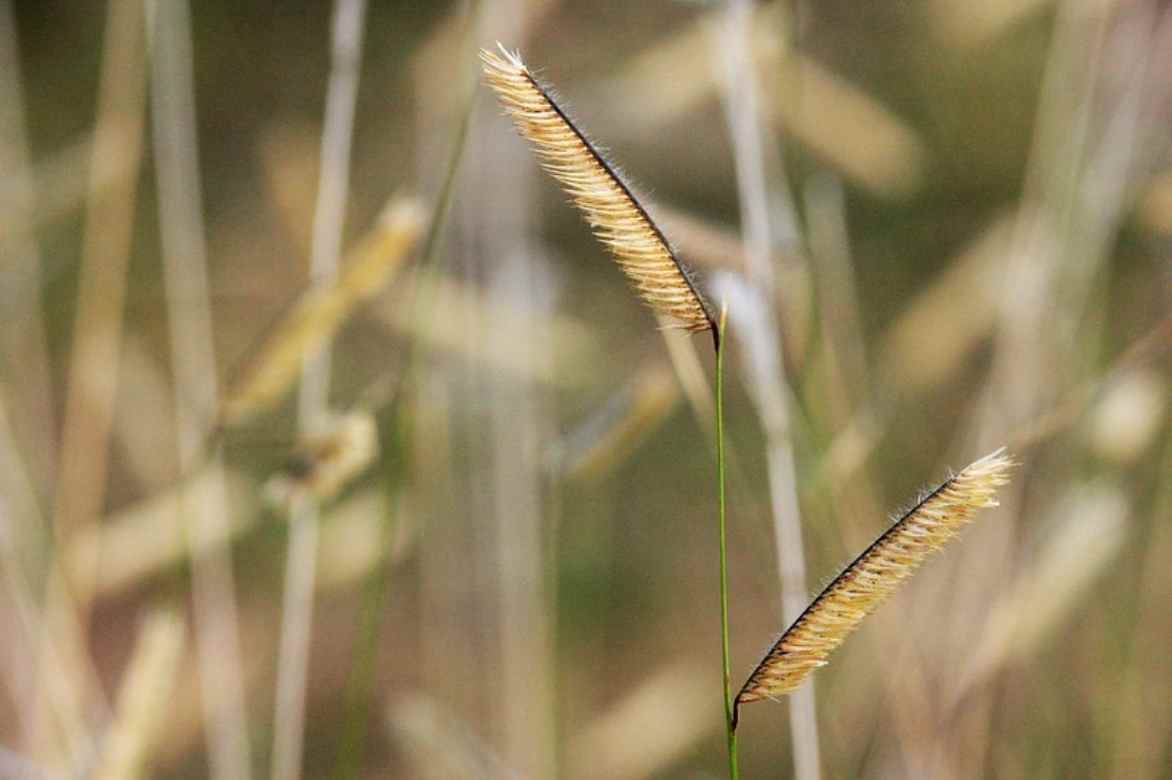
Bouteloua gracilis
Multiply
Bouteloua multiplies easily. Dividing the clump is the quickest and most practical way to obtain a well-developed young plant. However, it is also possible and easy to sow this grass (see above) if you want to grow more at a lower cost, for example when using it as a substitute for lawn.
Dividing a Bouteloua clump
Preferably carry out this task in early spring under a cold and humid climate. Elsewhere, you can also apply this technique in autumn.
- With a spade, circle your young plant of Bouteloua, about 10 cm wider than the circumference of the clump.
- Remove the clump from the soil, ensuring you keep as much soil as possible around the roots.
- Using a sharp tool (such as a sharpened spade), slice the root ball into two or more sections, ensuring each has at least one healthy set of leaves and roots.
- Replant immediately in the desired location or in buckets.
- Water and mulch.
Combining Bouteloua in the Garden
The Bouteloua, highly adaptable, lends itself to multiple uses, from the most romantic to the most contemporary.
- In a flower bed, enjoy its light and airy flowering in summer and early autumn alongside roses, and medium to tall perennials such as Rudbeckia, Echinacea, Asters, Solidago or other ornamental grasses like Andropogon gerardii.
- In a naturalistic meadow, it works wonders with artemisias like Artemisia lactiflora ‘Guizhou’, towering Silphium perfoliatum, Monardas, Eupatoriums, or warm-toned Heleniums.
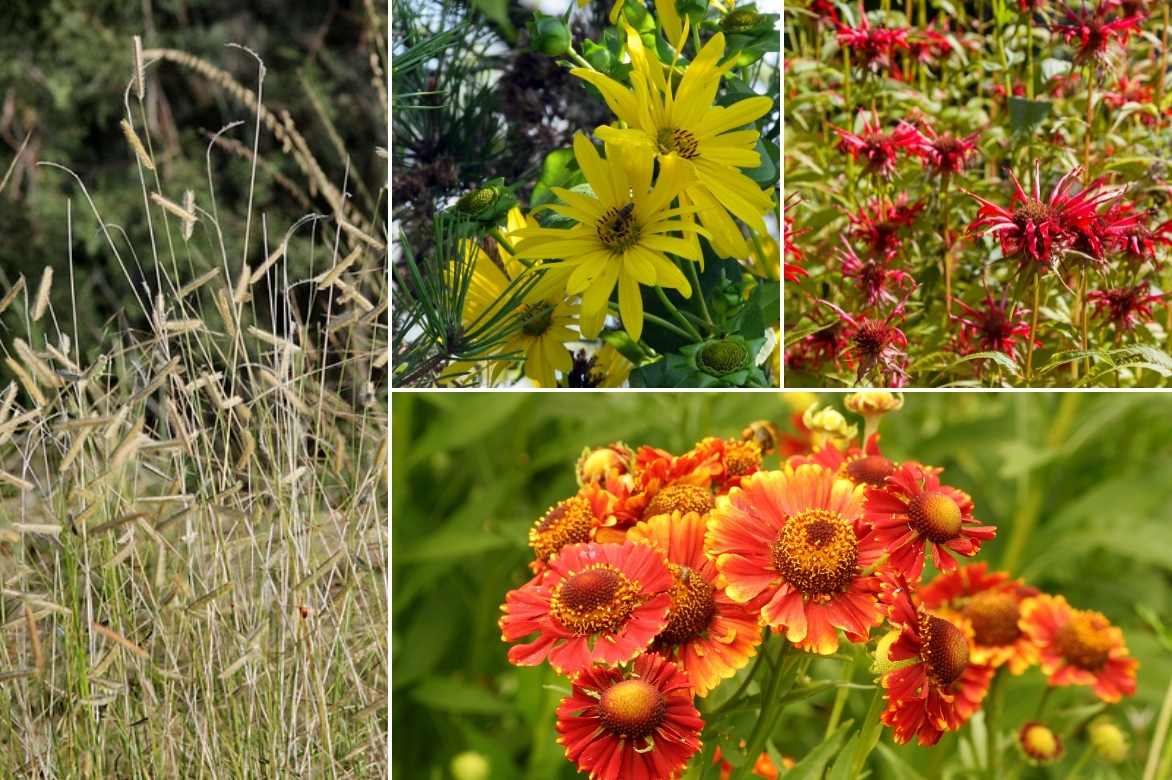
Bouteloua gracilis, Silphium perfoliatum, Monardas, and Heleniums.
- On a slope, pair it with undemanding plants that, like it, tolerate dry conditions. Ceanothus are among these, flowering in blue, white, or pink from March to October depending on the species. Roses, lavenders, and St. John’s Wort also make good companions. For perennials, consider yarrows, hardy geraniums, Nepeta, and perennial salvias.
- In a sunny rock garden, it adds lovely accents among sedums, fescues, artemisias, pinks, and santonias. A few dwarf conifers also create beautiful contrasts in form and colour. Small gaps between rocks can host early-flowering bulbs (Chionodoxa, Crocus, Snowdrops, Daffodils, and Botanical Tulips) or autumn-flowering ones (Colchicum, Sternbergia lutea).
- In a scree garden, plant a few clumps irregularly and enhance the natural effect with other grasses like Stipa tenuifolia, blue fescue, Andropogon, or upright panic grass. For flowering, fleabanes, asters, lavender, rockrose, or moss phlox thrive under the same conditions.
- In a Mediterranean border, it pairs beautifully with iconic plants like Provence or Italian cypresses, rockroses, olive trees, oleanders, lavenders, or strawberry trees.
- In a modern composition, mix it with Carex, golden-leaved (Carex ‘Everillo’) or variegated (Carex ‘Everest’), agapanthus, bamboos (some varieties stay neatly in place), birches with pristine bark, or mahonias in cooler spots.

Mahonia, Agapanthus, Bouteloua gracilis, Fargesia murielae bamboo, and Carex oshimensis ‘Everest’
→ Discover 7 more ideas for pairing with Bouteloua in our advice sheet!
Useful resources
- Order your Bouteloua directly from our online nursery!
- Discover other drought-resistant ornamental grasses for a south-facing border.
- Our tips for designing an ornamental grass garden.
- Do you think you’re allergic to grasses… but have you tried this selection?
- Some drought-resistant perennials to accompany your ornamental grasses.
- Subscribe!
- Contents

































Comments